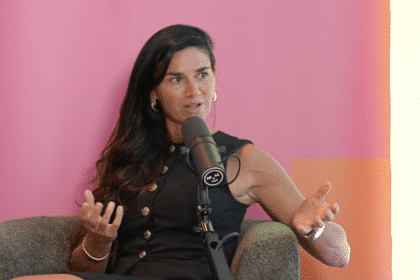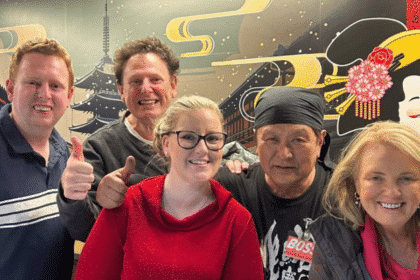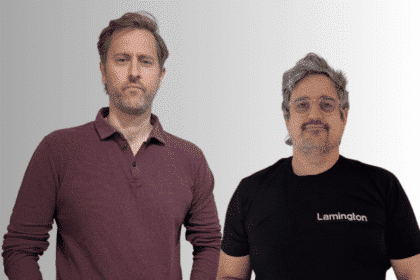In this guest post, the Tall Planner’s, Kate Smither (pictured) examines the gender pay gap, as well as how the pandemic can be used to change existing structures for the better.
November 20th was Equal Pay Day according to the Fawcett society in the UK. It marked the day at which women effectively stop earning any money for work done compared to male colleagues due to the gender pay gap. It highlights that women are paid roughly 5 weeks less a year than men for the same roles.
The gender pay gap, as calculated by Fawcett, using “the mean, full-time, hourly gender pay gap for the UK, is 11.3 percent, a tiny decrease from 11.9 percent last year”. It’s such a minimal difference that it is barely a difference at all. It shows that, despite the fact that the world has changed in many ways, some things haven’t changed at all.
In Australia, the numbers are just as dire. The pay gap sits around 22.8 percent, with no improvement on the last year. According to the Workplace Gender Equality Agency, women in Australia are paid an average of $26,000 less than their male counterparts
But the opportunity of now is to create change, because now is a time when everything is up for grabs to redefine what’s possible. It feels like a time when change is a must not an option
Traditional structures usually shift post a global event, post a war, a depression, pandemic, a political or financial event, Times of crisis create “crossroads” for people and for society as a whole.
When it comes to the traditional structures of work and gender within it, it seems like we are still stuck between “getting back to normal” or adopting a hybrid of the past and the present. The structures are bouncing between remote and in office, how many days here and how many there. We are still measuring our options and our benchmarks for success on traditional metrics. We are still being held back by the inherited gender and power structures of decades past where if women worked it was more often than not part time and as a gender, we were all late to the salary ladder so whether fulltime or part time, we were behind male counterparts
But the pandemic can be the circuit break traditional workforce structures needs.
If we follow the shifts in human behaviours, we will see how they are manifesting in employee behaviours. As people start to value things and their lives differently, this might be a moment for businesses to find ways to create new value for their people. And demonstrate values that people can value in turn.
Back in 2018, belief driven buying emerged as a new wave of consumerism that started to shape the way people shopped. It started to put pressure on brands to take a point of view on societal issues and it meant that the debate about what a brand’s purpose was took on a while new life as people demanded a point of view.
By 2019, Integer stated that “Nearly two-thirds of consumers are considered “Belief-Driven Buyers,” meaning that they choose, switch, avoid or even boycott a brand based on its platform for social issues….it (was) found that value-based communication for a brand can be just as effective as product-based communication in driving purchase intent”. Suddenly the belief and the values of a brand had a value. It was noted that at this point “It’s our belief systems that ultimately drive our choices. We choose products because they align with our values, not because we align with a particular segment of the population.”
We buy on our belief not because we are male, female, short, tall, old or young but because our beliefs are something more valuable
The rise of belief buying challenged the traditional rules of segmentation in the consumer landscape. It moved the conversation to the universal and the human first
Whilst belief driven buying in the consumer sense is nothing new, what is emerging now is the rise of belief driven employment. There is a new focus on the value people get from work not just in time or in dollars but in a more holistic way. Companies are now having to think more and more about the value they create continuously for their people just as much as for their customers.
One way to think about it is as ROV not ROI. A new focus on the return of value created in the business not just investment. It is about valuing the values of the business and ultimately its beliefs as much as the bottom line
Gartner has rebadged the great resignation as the great reflection echoing the rise of self awareness, greater sense of self worth and the truth that people may not want to go back to a workplace that didn’t value them pre pandemic. The beauty of looking to a return on value is that it makes the business think about their people like their first (and most important) customers. It changes the mindset and it make a business think that what they need to do is make an employee “buy” their business everyday.
Afterall, like all competitive markets today, customers won’t just switch on price. Now it seems like they will switch on values
Two companies, Unilever and Uber, are making headlines right now for starting their journey to continually invest in value for their employees. Both are also challenging the traditional structures of employment,
Unilever’s four day week or 100:80:100 as they frame it. 100 percent productivity in 80 percent of the time for 100 percent of the salary also encourages employees to design how their working week works. The focus is on removing as much of the low value workload as possible and creating positive value for employees through a more balanced and less stressful day to day.
Uber, perhaps not a brand typically seen as an “employee-first” one is hitting the news with its investment in a platform designed to activate the “creative muscle” of their people by offering them tools to inspire and innovate creating new ideas beyond their day to day “job spec”
Whilst both have taken different approaches, at their core, both companies have done something very similar, they have liberated their structure. And they have created new value by doing so. They have become companies worthy of being “bought” everyday because they are finding ways to bring their values to life for their people. And that new value creation is what makes the pandemic not just a circuit break but a great leveler. It has brought us all to the crossroads, It is now just a question of which way we go, forwards or backwards and how we keep levelling everything up.








